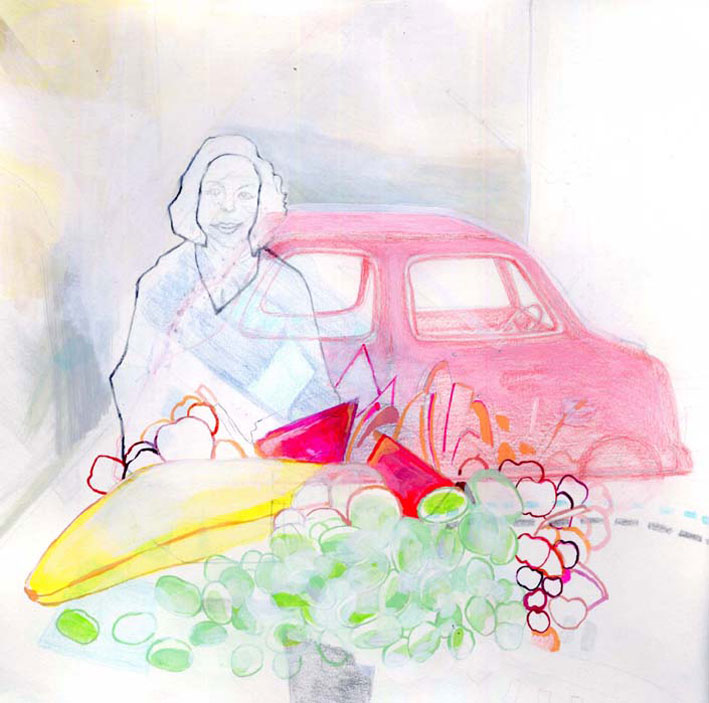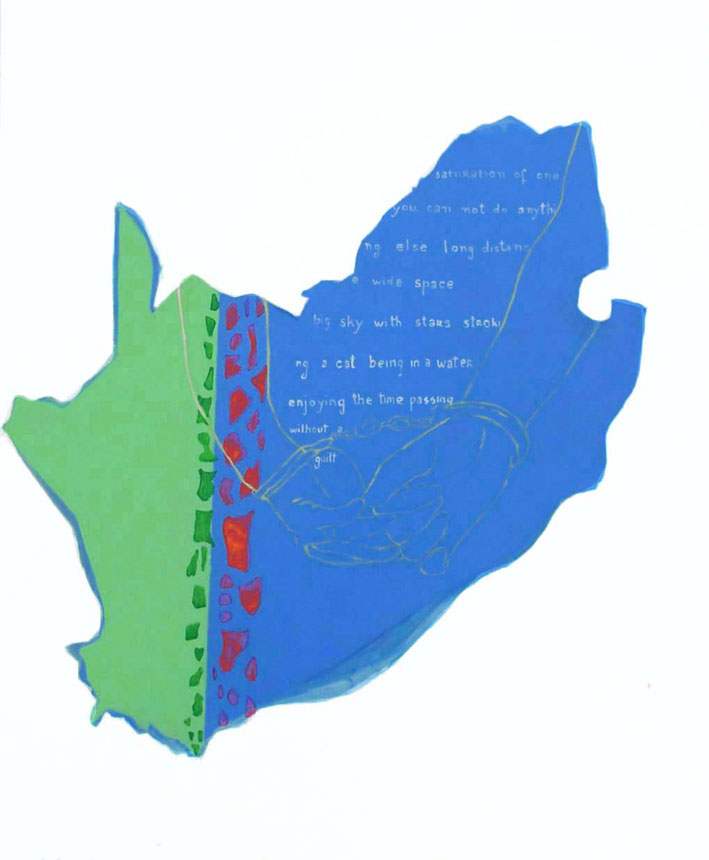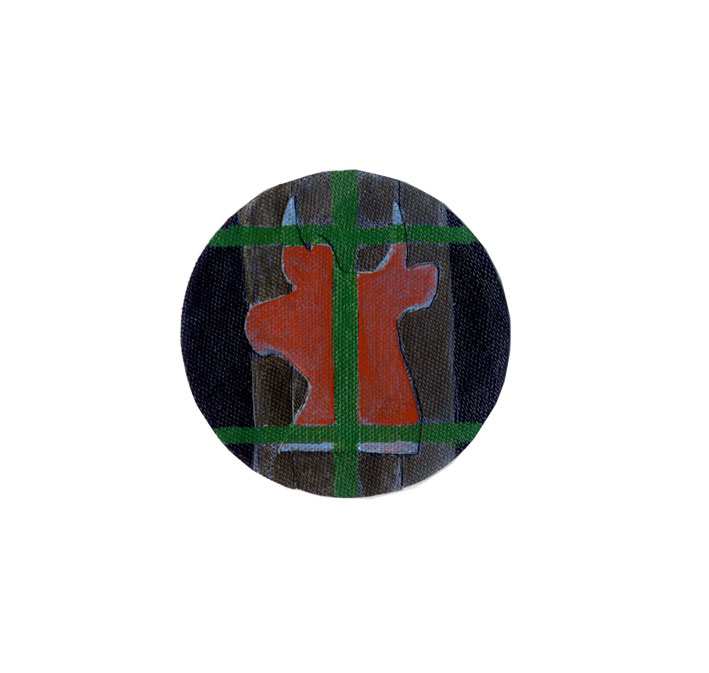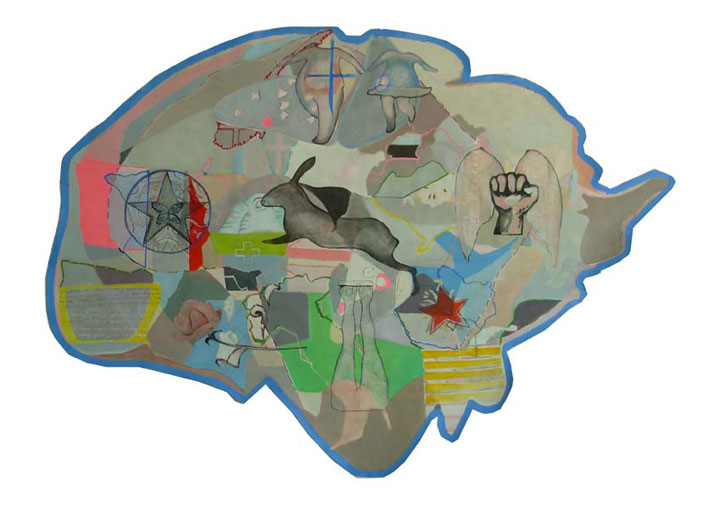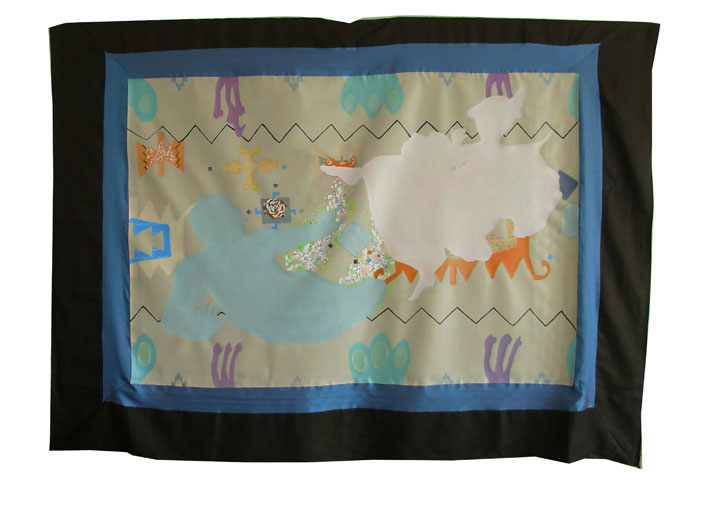Representing the extension of my previous artistic research into the phenomena of pleasure, identity, displacement, immigration, politics and power in contemporary society, A CUP OF TEA joins the wide stream of contemporary concepts of art mapping.
Several phases of project realization took place in Belgrade, Venice and Paris (2010–2011). The Internet, and specifically, Facebook, Skype and Google Earth programs have been used as digital spaces and relevant sources of visual material.
In general, the art project conceptualizes several key topics, among which the most important are:1)the question of pleasure, 2)the problem of alienation and loneliness, 3)the problem of increasing crime in the contemporary world, and 4)the problem of identity in postmodern times. Particular attention has been paid to the differences between the personal and collective, ethnic and political identities, as well as the representation of identity/identities in the digital era of the Internet. Closely connected with the widespread phenomena of migration, the issue of changeable personal identity is also elaborated: the new culture as the new “habitat” determines these changes, producing at the same time feelings of nostalgia. Thus, the project opens a dialogue between the past and the present, between the inherited and the newly accepted, suggesting that personal identity lies at the crossroads of contents of (suppressed) memory and new experiences.
In its final form, the project consists of: 1)a series of interviews, 2)twenty-five drawings in various techniques, divided in three cycles – Portraits (nine drawings); States (seven drawings); Personal maps (nine drawings), and 3) two final works in larger dimensions, titled My Land and Garden.
IS IT YOUR CUP OF TEA?
With her latest series of works entitled A CUP OF TEA, Marija Jovanović announces a new moment of personal and creative maturation. The exhibition, which was also compiled in a booklet of the same name, possesses a verbal and visual expression, which relationally gives a complete picture of the problems she devoted herself to. From the sphere of the purely poetic, Marija delved into deeper, existential topics that preoccupy her, without illustrating them literally. To begin with, the problem of identity, which is very important to Marija, invokes a reflection on the questioning of the antipodes of Place and Non-Place, in the way that Marc Augé questioned it, stating that a Place can only be defined as identity-based, relational, historical, but that a space that is not subject to such a definition is called a Non-Place. Having frequently changed her location, the artist has given priority to finding that Place of foundation, which led to her highly complex, synthetic research.
Using new technologies, primarily digital imaging and cyber space, mainly as a means of communication, the artist finds a template for her drawing and painting interventions. Due to her own physical displacement from her original natural environment/Belgrade to some of the other European or world cities, by striving to establish communication and social networks via Facebook and Skype, she establishes her Place. At a distance from the data that people place about themselves on Facebook, and with the help of short interviews and surveys of selected acquaintances and friends, she attempts to build up a picture of them and to paint their portraits. With the overall activity she ‘paints’ her own self-portrait. The portrayed friends provoked the author with a factography of their personal presentations and answers, and, using their photographs, she primarily searched for an inciting plastic configuration which allowed her to create a series of stylised portraits. According to the author’s personal statement, the portraits represent ‘individuals as ornaments of their own character’.
Despite a broad repertoire of expressed temptations and problems that arise before young people, especially artists of this time, what we recognise in Marija Jovanović is a persistent, quiet, but fierce struggle to establish personal and creative identity. The world of her art, which in its early phase was constituted by painting small household items and finding beauty in small things related to interiors, Marija now boldly replaces with a large, external world, so as to establish her Place and to ground herself and her artistic poetics in global uncertainties and unknowns. Curious, open and communicative, despite knowing the potential of new technologies, she has remained true to her drawing and painting syntax, exploring its full potential, but in constellation with the screen image.
Travelling through Facebook and various web browsers, Marija Jovanović resembles those 19th century globe trotters who, in their travelogues, described places where the meaning is not created by identity, recognition, relation and history, where solitude is perceived as the overcoming and emptying of individuality and where only the movement of images allows viewers to imagine what the past was like and how the future might be. At the same time, this author’s personal geographical travelogue with toponyms denoting the homeland or temporary residence of her friends, who all now dwell together in no man’s land, in Place, is subject to the paradox of that seat of universal mankind where that Place is one nowhere, which Michel Foucault called, in his text ‘Of other spaces’, heterotopias. That would be a designation for those Places or those spaces of otherness, which are neither here nor there, but are, at the same time, simultaneous, multi-layered and of a physical and mental nature: the position of immigrants, those who are fortunately evicted by the nature of their work, as is the case with the young artist, to be constantly moving and trying to place themselves in an existential space located between a fictitious former and future dwelling. That primeval need for locating oneself by creating one’s world/ identity, in recognising the universal through personal travel experiences and quests, and in the experience of friends and reflections on their lives, resulted in a series of paintings and drawings, resembling a small atlas. In an effort to define her own creative homeland, Marija creates a third space generated from the virtual space, which is doubtless a discovered Place of her own creative world.
Leafing through this small atlas of homeland maps, it appears that Marija Jovanović has unfolded a space to contemplate the specific anthropology of solitude.
Bojana Burić,
Art historian, Faculty of Fine Arts, Beograde
Translated by Aleksandra Đurić-Calcutt

